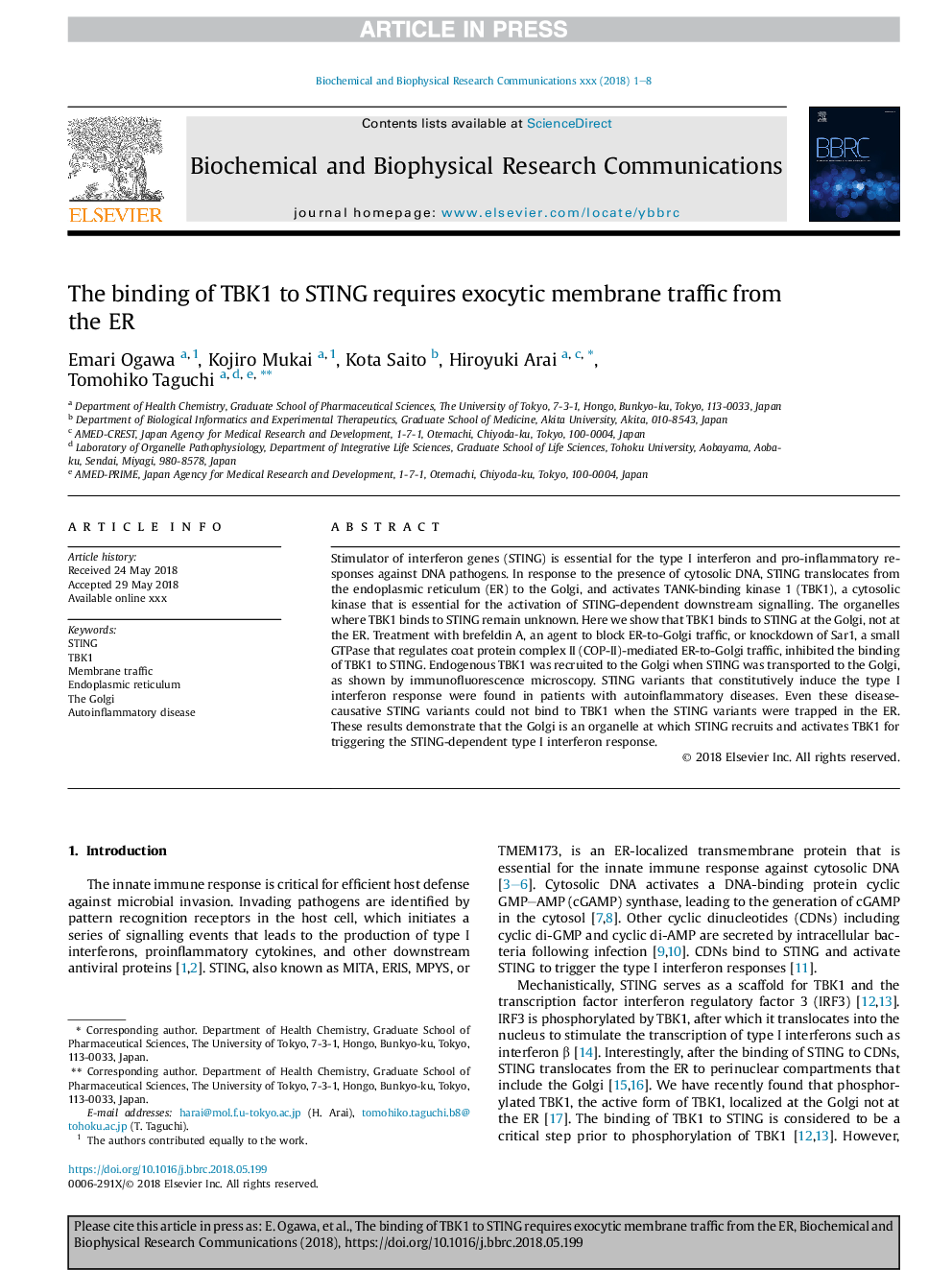| Article ID | Journal | Published Year | Pages | File Type |
|---|---|---|---|---|
| 8292294 | Biochemical and Biophysical Research Communications | 2018 | 8 Pages |
Abstract
Stimulator of interferon genes (STING) is essential for the type I interferon and pro-inflammatory responses against DNA pathogens. In response to the presence of cytosolic DNA, STING translocates from the endoplasmic reticulum (ER) to the Golgi, and activates TANK-binding kinase 1 (TBK1), a cytosolic kinase that is essential for the activation of STING-dependent downstream signalling. The organelles where TBK1 binds to STING remain unknown. Here we show that TBK1 binds to STING at the Golgi, not at the ER. Treatment with brefeldin A, an agent to block ER-to-Golgi traffic, or knockdown of Sar1, a small GTPase that regulates coat protein complex II (COP-II)-mediated ER-to-Golgi traffic, inhibited the binding of TBK1 to STING. Endogenous TBK1 was recruited to the Golgi when STING was transported to the Golgi, as shown by immunofluorescence microscopy. STING variants that constitutively induce the type I interferon response were found in patients with autoinflammatory diseases. Even these disease-causative STING variants could not bind to TBK1 when the STING variants were trapped in the ER. These results demonstrate that the Golgi is an organelle at which STING recruits and activates TBK1 for triggering the STING-dependent type I interferon response.
Related Topics
Life Sciences
Biochemistry, Genetics and Molecular Biology
Biochemistry
Authors
Emari Ogawa, Kojiro Mukai, Kota Saito, Hiroyuki Arai, Tomohiko Taguchi,
